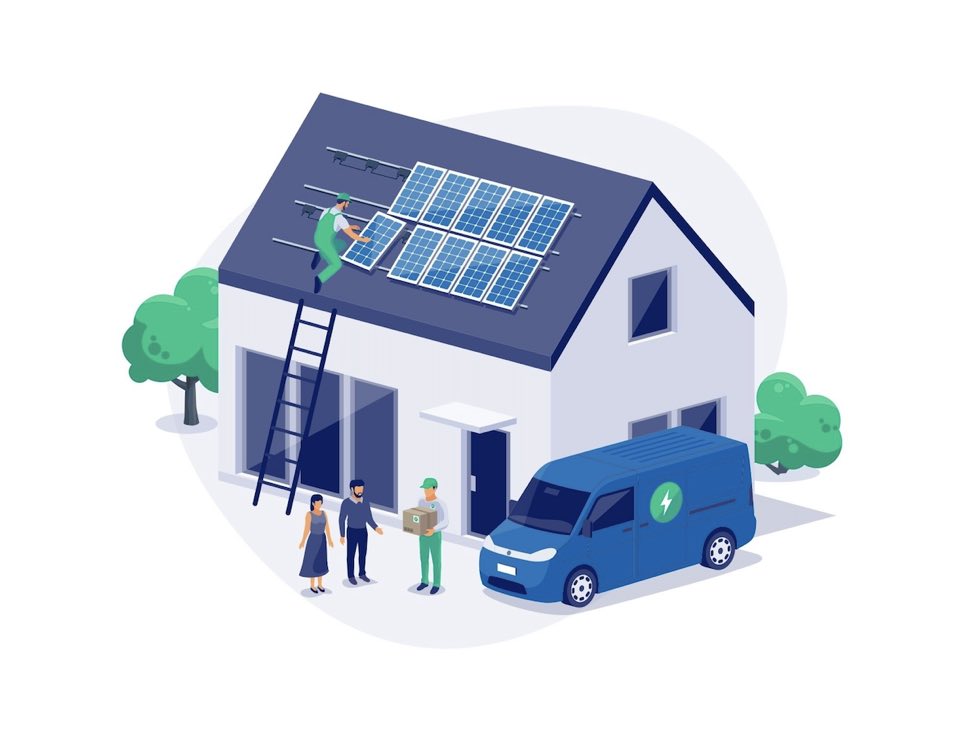First, Know Your Solar Goals
What is your reason for considering solar power? Do you want to use greener electricity? Are you hoping to save money compared to your current utility provider? Are you seeking price stability and certainty? Or are you aiming to become independent from the grid, so that you won’t have to worry about losing power during storms or wildfires? Perhaps you have a combination of these goals in mind.
For my family, we own two electric vehicles and recently purchased a 12.3 kW solar system that meets our daytime electricity needs. We plan to add a home battery in the future to store and use electricity in the evening.
When speaking with solar providers, ask them to guide you through the following categories.
Vendor Evaluation
Before choosing a solar vendor, it’s important to evaluate them based on certain factors. Firstly, consider how long the vendor has been in business and what kind of reviews they have received. It’s also beneficial to choose a vendor who makes their own solar panels to avoid any middlemen complicating warranty issues. Additionally, it’s important to understand the expected efficacy of the panels in 20-25 years, as well as the warranties offered by the vendor.
You should also ask about the warranty coverage for both parts and labor, as well as any potential repairs for a leaky roof caused by the solar installation. Another factor to consider is the cost per kilowatt, and how it compares to your current utility costs. You should also inquire about the project timeline and whether the vendor handles any necessary permits. Finally, it’s important to ask what will happen to your warranty if the vendor goes out of business. While smaller providers may offer lower costs, it’s important to consider the risk of them not being around in the future.
Can Your Rooftop Support Solar?
When discussing solar panels with vendors, they can assess whether your rooftop is suitable for installation. The number of panels that can be installed and the amount of electricity generated depends on the following factors: the orientation of the sun, nearby obstructions such as trees that can cause shadows and reduce panel efficiency, the pitch/angle of the roof, and the quality of the panels themselves. It’s important to note that solar panels should only be placed on a rooftop in good condition, and if the rooftop is older, it may need to be replaced before installation. It’s also important to consider the number of months in a year that the rooftop has unobstructed sunlight, as cloudy and rainy days produce less electricity than sunny ones.
Understand your Energy Needs
To determine your monthly electricity consumption over the course of a year, calculate the kilowatts used. If you plan on adding appliances or an electric car, be aware of the additional electricity they will require. You should also consider how much solar energy you plan to generate. Tools like PVwatts can provide estimates based on your location, and your solar vendor can also help. Keep in mind that sunlight generation may be lower during fall and winter months, and without a home battery storage, your utility company will act as your battery. Be sure to check with them to understand the rules surrounding kilowatt credits for solar systems. If you decide to purchase a home battery storage, you can become less dependent on the utility company by storing your own electricity. Note that without a battery, your solar system will stop working if your utility company goes down.
Evaluate Financing Options
It is important to consider any fees that your utility may charge for using solar power, as some states and localities do impose such fees. Additionally, it is worth familiarizing yourself with the incentives that may be available for solar system owners, such as the 30% tax incentive offered by the federal government. For further details on these incentives, please refer to https://www.energy.gov/eere/solar/homeowners-guide-federal-tax-credit-solar-photovoltaics.
Permits
After choosing a solar vendor for your system installation, you will need to give them information to obtain the necessary permits. To estimate the time required for permits, inspection, and utility connection in your area, you can use SolarTRACE.
In conclusion, if you are considering installing a solar system at home, it is important to evaluate your electricity needs and the amount of solar power you plan to generate. Be mindful of any additional fees imposed by your utility company, and take advantage of incentives available for solar system owners. Consider purchasing a home battery storage to become less dependent on the utility company and ensure uninterrupted power supply. By doing so, you can not only save on your electricity bills but also contribute towards a greener future. If you’re thinking about purchasing an electric vehicle, take a look at Electric Driver‘s guides and content to assist you in making an informed decision.
